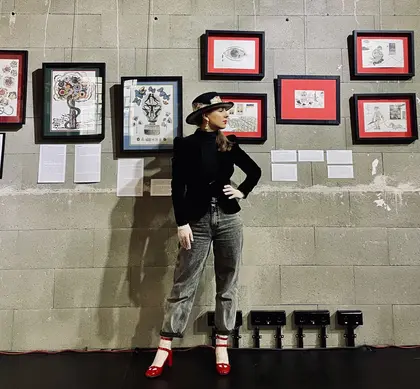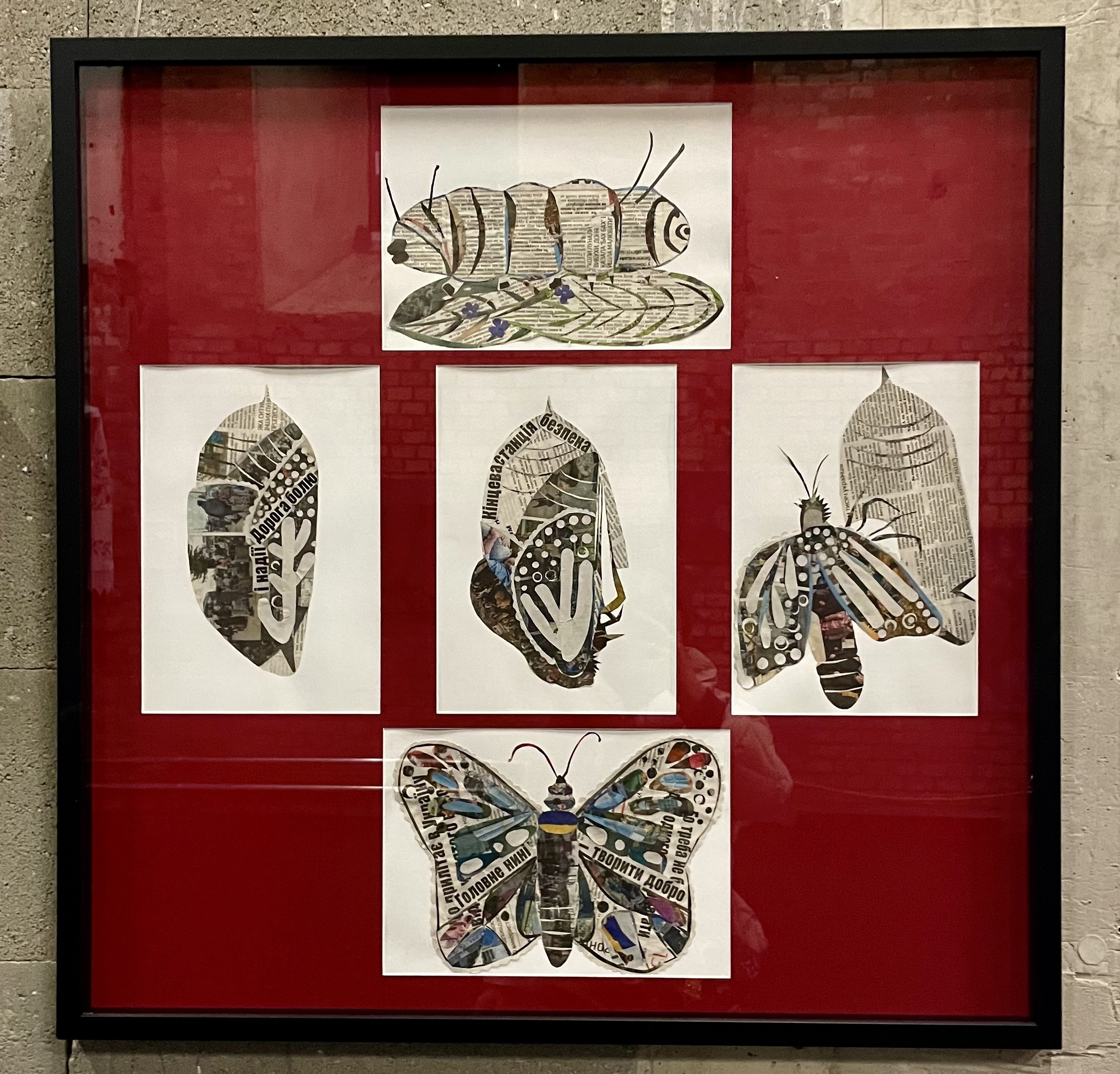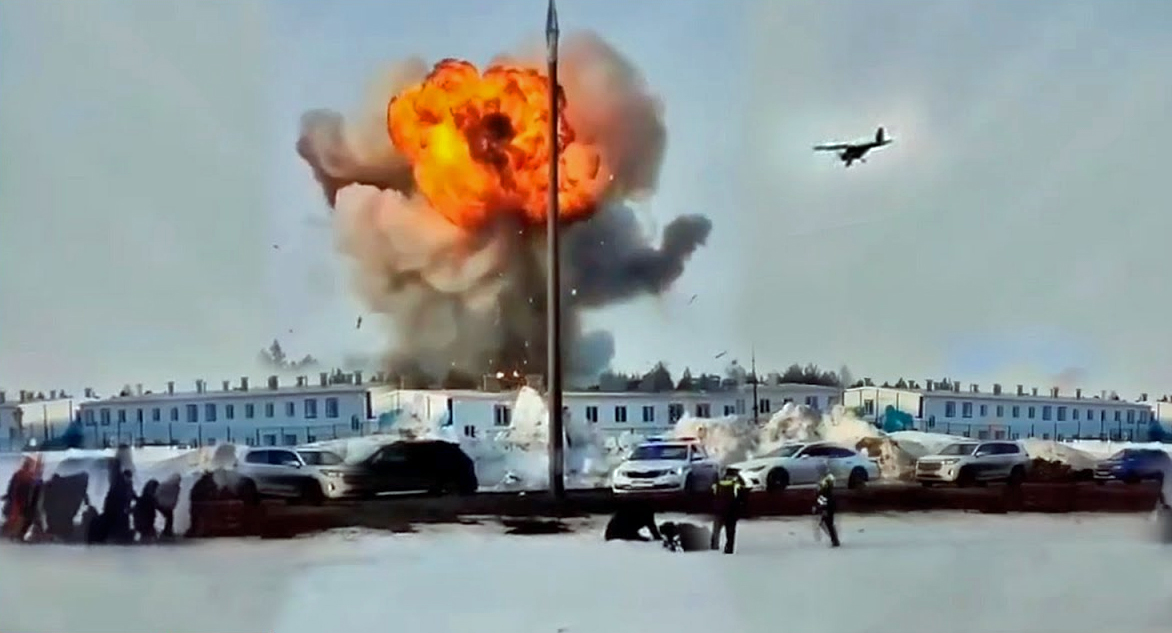Hélène Litorelle is an artist, fashion designer and Jungian analyst whose work is based on ancient symbols. Due to the full-scale Russian invasion of Ukraine in 2022, the artist and her infant son moved to Austria.
Kyiv Post spoke with her to find out more about the inspiration she takes from symbols and the combination of the acquired profession of a Ukrainian diplomat with creativity.
JOIN US ON TELEGRAM
Follow our coverage of the war on the @Kyivpost_official.
Hélène, you have a powerful background behind you: cooperation with the Treasury of the National Museum of History of Ukraine, participation in numerous exhibitions, your own niche brand of accessories... Do you remember the moment when you became interested in the history of ancient symbols?
It began in childhood. My grandfather was an artist, he often visited flea markets and took me with him. There, I first saw ancient jewelry and antique objects with symbolic images that inspired me. Then, whenever my parents and I traveled, we would always visit museums. It was there that I noticed how the symbols of some cultures resonate with the symbols of others. In times, even when there was no communication and people could not exchange information over long distances, symbols depicted on everyday objects and art coincided.
I had been very interested in this fact, and thus began my great journey into the world of art history, religion, philosophy and psychology. In particular, Carl Gustav Jung's book "Man and his Symbols" inspired me to study as a Jungian analyst. It was Jung who introduced the concept of the collective unconscious.
This philosophy is very close to me. I believe that there is harmony in the world and everything is interconnected, we just don't always notice it. Symbols are like keys to doors, behind which are hidden answers to deep questions about life and the world.
Where does your pseudonym - Hélène Litorelle – come from?
I came up with it during my student days, while studying at the Institute of International Relations in Kyiv. As a future diplomat, I had to choose a foreign language and learn it to translator level; I chose French. Already at that time I dreamed of my own brand.
One day a friend was about to throw her old handbag in the trash, but I discreetly took it and decided to make it into a surprise. I completely sewed the handbag and decorated it to turn it into a spectacular accessory. Then the question arose: how should I sign it? My maiden name was Poberezhna and my dad asked me not to change it when I got married. My maiden name evoked in me an association with the French coast, because the French translation is littoral. That's how my pseudonym Litorelle came about.
Unfortunately, my dad passed away. Although I did change my surname when I married, my father's surname lives on in my creative name and the name of my brand. It is very symbolic and means a lot to me.
You create your artworks by combining your own drawings with newspaper clippings. Why exactly?
The idea appeared during the coronavirus pandemic, which was full of newspaper columns. Therefore, I also decided to show world news through my collages with newspaper texts and with animals. Each of the animals symbolizes a certain event.
So COVID-19 represents the Tiger, which can mean the victory of both death and life. I touched on the topic of fires in the forests of Australia, using a Kangaroo - the country's national symbol - in my drawings. I depicted another big fire in Notre Dame de Paris through the Lily flower - a symbol of Our Lady and hope. Stock quotes are about the Crocodile, a medieval symbol of hypocrisy with its "Crocodile Tears". And I reflected Brexit through two Ravens in flight, aggressively attuned to each other.
Due to the full-scale Russian invasion of Ukraine in 2022, you are now in the capital of Austria. But February 24 last year caught you in Kyiv. Tell us what the first days of the great war meant to you and how they affected your creativity.
I described the start of our morning on February 24, 2022, in my "War diary from the Ukrainian shelter". I had an eight-month-old son in my arms, it was important not to lose heart. I wrote to my psychoanalyst, who at that time was in Donetsk, in the basement, about my confusion. She said that maybe letting my emotions out through creativity would help me deal with the situation.
I started looking for newspapers with news about the war, I asked my neighbors for some, but I never found any. Therefore, I drew the first work of that period in pencil on the tenth day of the full-scale invasion. It was the day when I took the little one for a walk in the stroller and saw a Kalashnikov assault rifle on the table near the house. Previously, it was impossible to imagine such an absurdity.
Then we talked a lot with our relatives, discussed how to act better. Maybe go to the west of Ukraine? It was a very difficult choice at the time. You could say it was a choice between the likelihood of perishing, if we stayed and the likelihood of perishing on the way. After all, online news resources wrote about Russian soldiers shooting families with children on the roads. It was very scary...
You take an active part in the artistic life of Vienna, presenting your works filled with symbols. How important do you think the contribution of the "cultural front" can be to Ukraine's victory?
To date, I have taken part in five exhibitions in Vienna. My first exhibition was personal, at the Polish Institute in Vienna. It was a great honor for me, because representatives of the embassies of European countries came to the opening. I had the opportunity to tell my story, which I called "Broken Dreams. War diary from a Ukrainian shelter". Through it, I wanted to convey the feelings of every Ukrainian woman who had to flee the war with her children.
The second exhibition was called "Myt’ ‒ Where Past Meets Present". It was one of my favorite exhibitions. Myt' is the moment when everything can change in a second. The myt' is the moment when the past meets the present, and traditions are woven into the present.
The doll-motanka is one of my works to which I would like to draw special attention. It is human-sized, I worked on it for about two months. I also used the columns of newspapers to create my motanka. In this way, I emphasized the connection between the ancient Ukrainian doll and the Ukrainian present, which, because of the war, is the present of world news.
I placed Berehynia on the apron of the motanka. In ancient Slavic mythology, she is the goddess of goodness and protection, which is why I depicted her with arms open for a saving embrace. The "ornament" is a newspaper text about the defense of Ukraine. Such the image is meant to stand in the way of evil and bring long-awaited peace to my country.
Apart from your artistic/creative achievement, what has given you particular pride?
I think being able to convey the feelings of every Ukrainian woman who had to flee the war with her children."
You can also highlight the text and press Ctrl + Enter





